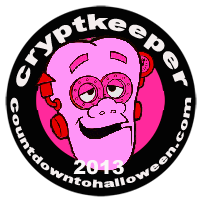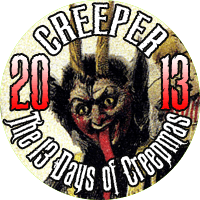 Rated X for “disturbing moral tone.” That, my friends, is the epitome of effective film making in the horror genre. Anyone can pack a flick with too much gore for public consumption. Only one motion picture has ever managed to just be too disturbing to release. That was the magnificent Henry: Portrait of a Serial Killer. The filmmakers were even told by the MPAA that there were no cuts they could make to get an R rating. The gore isn’t extreme by our modern standards. There is some pretty gruesome stuff, but it wasn’t even excessively gory by 80’s standards. The whole tone of the flick was just too much. That’s because it is the most realistic look into the world of the serial killer ever made. I heard someone once say that the August Underground trilogy is the most realistic portrayal of a serial killer ever made. That person was an idiot. I’ll get into that some other time though, ‘cause we’re here to talk about the masterpiece that is Henry.
Rated X for “disturbing moral tone.” That, my friends, is the epitome of effective film making in the horror genre. Anyone can pack a flick with too much gore for public consumption. Only one motion picture has ever managed to just be too disturbing to release. That was the magnificent Henry: Portrait of a Serial Killer. The filmmakers were even told by the MPAA that there were no cuts they could make to get an R rating. The gore isn’t extreme by our modern standards. There is some pretty gruesome stuff, but it wasn’t even excessively gory by 80’s standards. The whole tone of the flick was just too much. That’s because it is the most realistic look into the world of the serial killer ever made. I heard someone once say that the August Underground trilogy is the most realistic portrayal of a serial killer ever made. That person was an idiot. I’ll get into that some other time though, ‘cause we’re here to talk about the masterpiece that is Henry.
The film is based on the supposedly factual exploits of real life serial killer Henry Lee Lucas. I’m not going to get into the plot too much for the benefit of those who haven’t seen it. Henry is living with his old prison buddy Otis. Becky, Otis’s little sister, comes to live with them and develops a thing for Henry. Otis has a bit of a thing for his sister. Otis, by the way, is a magnificent scumbag. One night, Henry and Otis pick up some hookers. Henry kills them, and Otis decided that he wants to kill someone too. Henry sets about tutoring Otis in the fine art of serial killing. Eventually, situations arise between Henry, Otis, and Becky that will change some of their lives forever. I’ll leave it at that.
 These days, when people talk about a “documentary like” approach to filmmaking, all too often it just means that they’re going to shake the camera a lot. This movie is truly documentary-like in a way Michael Moore would do well to emulate. It does not make any moral judgments at all; it only lets the events play out in front of the camera in a naturalistic way. It doesn’t elicit sympathy for the characters, nor does it condemn them. Even Henry has a certain code of ethics, skewed as it may be. He kills with no problem, but violently reproaches Otis for trying to feel up his sister. Did I mention that he’s a magnificent scumbag? Anyway, Henry doesn’t have a cute catch phrase. The deaths aren’t glossy or stylized, nor are they sanitized. There’s really not even any dramatic music or sweeping camera moves or any of the tricks Hollywood uses to add emotional gravitas to a scene. The carnage just is. Pure and simple. This is murder as real as it gets.
These days, when people talk about a “documentary like” approach to filmmaking, all too often it just means that they’re going to shake the camera a lot. This movie is truly documentary-like in a way Michael Moore would do well to emulate. It does not make any moral judgments at all; it only lets the events play out in front of the camera in a naturalistic way. It doesn’t elicit sympathy for the characters, nor does it condemn them. Even Henry has a certain code of ethics, skewed as it may be. He kills with no problem, but violently reproaches Otis for trying to feel up his sister. Did I mention that he’s a magnificent scumbag? Anyway, Henry doesn’t have a cute catch phrase. The deaths aren’t glossy or stylized, nor are they sanitized. There’s really not even any dramatic music or sweeping camera moves or any of the tricks Hollywood uses to add emotional gravitas to a scene. The carnage just is. Pure and simple. This is murder as real as it gets.
It is this moral ambiguity that the MPAA and many audiences at the festivals it screened at had such a big problem with. No moral judgment is passed on these characters or their actions, and there isn’t a happy ending. In fact, there really isn’t a resolution at all. Throughout the film, the murderers are not portrayed as monsters. They’re humans. The murders are shown for what they are, not dressed up in Grand Guignol style. It is the twin factors of the non-sensationalized characters and violence and the emotional and ethical neutrality that make the film so disturbing and powerful. This is not harmless, fun entertainment so much as it is a thought provoking look into the heart of darkness.
 The other thing that makes this film so affecting is the acting of the three principal players. Michael Rooker as Henry is the best portrayal of a killer I’ve ever seen. He is at the same time charming, friendly, odd, and scary as hell. There are moments he just seems like another guy going about his daily life. In the next scene he’s brutalizing a family. His portrayal manages to be subtle and incredibly intense at the same time. You really do believe him. I’m sure Michael Rooker is a nice guy, but after seeing this movie I’d be a little skittish if I ever met him. He’s that convincing. Next to Henry, the other great cinematic serial killer roles, such as Hopkins as Lector, Perkins as Bates, Spacey as Doe, or Theron as Wuornos, seem over the top and campy. Even Benoit Poervorde’s outstanding performance in Man Bites Dog pales in comparison. The only other performance as a serial killer I have seen come close to this kind of complexity and skill was Peter Lorre in M. Tom Towles (NOTLD remake, House of 1000 Corpses) is great as Otis. He seems likable for a moment, and then turns into a slimy, sleazy, creepy, despicable character the likes of which are rarely equaled. In case I haven’t mentioned it, he’s a magnificent scumbag. Whereas Rooker plays the killing scenes with all the excitement of a junkie getting his next fix, Towles plays Otis’s discovery of murder with the slobbering glee of a 13 year old seeing his first pair of boobs. It’s truly terrifying. Rounding out the core cast is Tracy Arnold. She’s the only one the audience really feels any empathy for because as soon as she enters the picture we have a feeling it’s not going to end well for her. She’s fresh out of a bad marriage and is intrigued by Henry. Tracy plays her with a naivety, vulnerability, “trying too hard” bravado, and unwitting self destructiveness that will remind everyone of someone they know. I once read a review that described her as “an open wound of a woman.” I couldn’t have said it better myself.
The other thing that makes this film so affecting is the acting of the three principal players. Michael Rooker as Henry is the best portrayal of a killer I’ve ever seen. He is at the same time charming, friendly, odd, and scary as hell. There are moments he just seems like another guy going about his daily life. In the next scene he’s brutalizing a family. His portrayal manages to be subtle and incredibly intense at the same time. You really do believe him. I’m sure Michael Rooker is a nice guy, but after seeing this movie I’d be a little skittish if I ever met him. He’s that convincing. Next to Henry, the other great cinematic serial killer roles, such as Hopkins as Lector, Perkins as Bates, Spacey as Doe, or Theron as Wuornos, seem over the top and campy. Even Benoit Poervorde’s outstanding performance in Man Bites Dog pales in comparison. The only other performance as a serial killer I have seen come close to this kind of complexity and skill was Peter Lorre in M. Tom Towles (NOTLD remake, House of 1000 Corpses) is great as Otis. He seems likable for a moment, and then turns into a slimy, sleazy, creepy, despicable character the likes of which are rarely equaled. In case I haven’t mentioned it, he’s a magnificent scumbag. Whereas Rooker plays the killing scenes with all the excitement of a junkie getting his next fix, Towles plays Otis’s discovery of murder with the slobbering glee of a 13 year old seeing his first pair of boobs. It’s truly terrifying. Rounding out the core cast is Tracy Arnold. She’s the only one the audience really feels any empathy for because as soon as she enters the picture we have a feeling it’s not going to end well for her. She’s fresh out of a bad marriage and is intrigued by Henry. Tracy plays her with a naivety, vulnerability, “trying too hard” bravado, and unwitting self destructiveness that will remind everyone of someone they know. I once read a review that described her as “an open wound of a woman.” I couldn’t have said it better myself.
Originally meant to be released in 1986, this movie languished on the shelf for 4 years before someone grew a pair and decided to release it unrated. Henry Portrait of a Serial Killer is a low budget wonder, and the most effective character study in the history of horror cinema. It has a heart wrenching ending that you can see coming a mile away, and it STILL gets you right in the gut. That’s skill right there. Michael Rooker got a lot of critical buzz from this movie, and rightfully so. Oh, and for the record, the 20th anniversary 2 disc set is full of great extras and well worth owning. No, they didn’t pay me to say that, although they can if they want. Two severed thumbs up. Nathan says check it out.









No comments:
Post a Comment